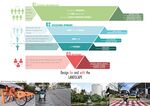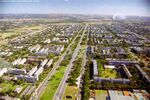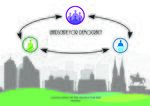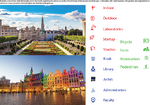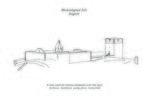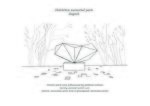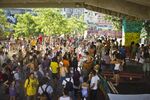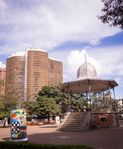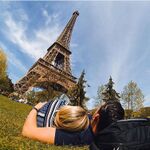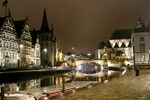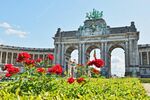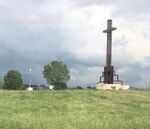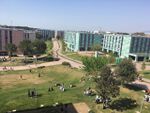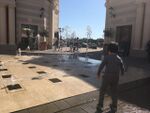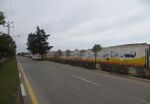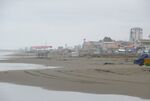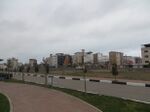LED Online Seminar 2018 - Working Group 12
--> Back to working group overview
Dear working group members. This is your group page and you will be completing the template gradually as we move through the seminar. Good luck and enjoy your collaboration!
Assignment 1 - Reading and Synthesizing Core Terminology
- You can read more details about this assignment here
- Readings are accessible via the resources page
Step 1: Your Landscape Democracy Manifestoes
- File:Landscape democacy.jpg
Mahsa's Manifesto
- Initial manifesto yourname
Author's manifesto
Step 2: Define your readings
- Please add your readings selection for the terminology exercise before April 18:
A: Landscape and Democracy
The New Urban Agenda Quito Declaration on Sustainable Cities and Human Settlements for All, UN resolution from December 2016 - Susanna Patata
Directive 2003/35/EC of the European Parliament and of the Council of 26 May 2003 providing for public participation in respect of the drawing up of certain plans and programmes relating to the environment and amending with regard to public participation and access to justice Council Directives 85/337/EEC and 96/61/EC - Statement by the Commission - Eric Vitrier
B: Concepts of Participation
Day, Christopher (2002): Consensus Design, Architectural Press - Petar Jurički
Hester, Randolph (1999): A Refrain with a View, UC Berkeley - Susanna Patata
C: Community and Identity
Welk Von Mossner, Alexa (2014): Cinematic Landscapes, In: Topos, No. 88, 2014. - Petar Jurički
Girling, Cynthia (2006): Informing Design Charrettes, The Integrated Assessment Journal - Mahsa Bazrafshan - 미안해 already taken -
Girling, Cynthia (2006): Informing Design Charrettes, The Integrated Assessment Journal - Eric Vitrier
D: Designing
Hester, Randolph: Democratic Drawing - Techniques for Participatory Design - Petar Jurički
Hester, Randolph: Democratic Drawing - Techniques for Participatory Design- R.Rahimi
Massachusetts Institute of Technology (2013): Places in the Making: How Placemaking Builds Places and Communities - Mahsa Bazrafshan
Massachusetts Institute of Technology (2013): Places in the Making: How Placemaking Builds Places and Communities - R.Rahimi
Woodcraft, Saffron, et al.: Design for Social Sustainability: A Framework for Creating Thriving New Communities - Susanna Patata
Woodcraft, Saffron, et al.: Design for Social Sustainability: A Framework for Creating Thriving New Communities- R.Rahimi
E: Communicating a Vision
Goldstein, B. E., A. T. Wessells, R. Lejano, and W. Butler. 2015. Narrating Resilience: Transforming Urban Systems Through Collaborative Storytelling. Urban Studies. 52 (7): 1285-1303. Eric Vitrier 'Reading the Landscape' by Simon Bell, EMU Tartu - R.Rahimi
Steps 3 and 4: Concepts Selection and definition
- Each group member selects three relevant concepts derived from his/her readings and synthesize them/publish them on the wiki by May 9, 2018
- Group members reflect within their groups and define their chosen concepts into a shared definition to be posted on the wiki by June 6, 2018.
- Other group members will be able to comment on the definitions until June 12, 2018
- Each group will also report on their process to come to a set of shared definitions of key landscape democracy concepts on the wiki documentation until June 20, 2018
Concepts and definitions
Author 1: Susanna Patata
- Concept 1: The New Urban Agenda was adopted at the United Nations Conference on Housing and Sustainable Urban Development (Habitat III) in Quito on 2016. Represents a shared vision for a better and more sustainable future where everybody have equal rights and access to the benefits and opportunities that the city can offer. The urban community reconsiders the urban system and physical form of our urban spaces to achieve this objective and recognize the correlation between good urbanization and development. It follows the principle of inclusivity; the meaningful inclusion of slum dwellers; the involvement of a wide range of stakeholders group, which have a critical role to play in the implementation of this shared vision. (The New Urban Agenda Quito Declaration on Sustainable Cities and Human Settlements for All, UN resolution from December 2016)
- Concept 2:Hester’s paper explore the development of participation. Since from the foundation of U.S. the local participation was considered an important right. With the professionalizing city management starts the separation of the citizens from the decisions about their landscape and the professionals assumed more and more responsibility in community design. With the creation of civil movements, the advocacy planning served the civil rights movement but it has had profound unintentional side effects that run counter to its original goals: visionary public plans. Participatory design has been transformed over the past three decades. Some trends evolved, some revised and all became more complex and varied depending upon local context.Today more people participate in local planning than before. The step for participatory design have to promote fairness and encourage creativity and innovation. (Hester, Randolph (1999): A Refrain with a View, UC Berkeley)
- Concept 3:The paper try to understanding how to plan and develop successful and socially sustainable communities.Building community is considered as important as designing in physical, economical and sustainable terms. The ‘social design’ approach must be considered in the practice of professionals involved in the design process of new and existed communities. The challenge to find a better planning practice is requested by the increasing pressure of urban population, climate change and ageing societies. The key of this good practice should begin from the awareness of how local identity and social networks influence people’s feelings of belonging to places in order to create more resilient and high quality communities.It discussed the fail experience of architecture that created isolated residents and dead, inflexible and costly spaces to maintain.(Woodcraft, Saffron, et al.: Design for Social Sustainability: A Framework for Creating Thriving New Communities)
Author 2: Petar Jurički
- Concept 1: Author thinks that the democracy is sometimes not the best solution for working out certain problems and for decision making in design. She suggest using the concensus approach as a mean for decission making among people involved in the design process. (Day, Christopher (2002): Consensus Design, Architectural Press)
- Concept 2: In the movie, director uses landscape as a mean to make people more aware of the environmental crisis. In addition we can conclude that landscape may contain meanings and stories about the communities around it as well as a emotional connection with the landscape they live in. (Welk Von Mossner, Alexa (2014): Cinematic Landscapes, In: Topos, No. 88, 2014.)
- Concept 3: Designers use creative methods (painting, sketching, collage etc.) as a mean to convey their ideas and thoughts to visualize places that are being designed. By drawing meaningful lines designers try to make the space they design precious to the people. Because of that we need participation of citizens and people from that area. Only through this kind of collaboration the lines and the design will have their true meaning to the people. (Hester, Randolph: Democratic Drawing - Techniques for Participatory Design)
Author 3: Eric Vitrier
- Concept 1 : How to manage and apply : Environmental Planning, Access-to-information, Legal proceedings / administrative proceedings, Access-to-justice, Governance, Public participation defined by articles
- Concept 2 : The author has developed computer-aided decision support tools to provide training, visualization, and modeling of charrete design (design-driven, participating community design activities) and other major public seminars. Design information. This tool was created to connect the public with community planning and design professionals. One of the goals of this task is to eliminate important knowledge gaps between experts and stakeholders who are responsible for preparing and evaluating program options. Design features show expectations and preferences for future development through a participatory, qualitative, and design-based approach that appeals to the general public, such as vision and brainstorming techniques. To achieve a more sustainable urban structure, you must support charrete through quantitative methods of modeling and measuring performance based on sustainable development indicators such as housing density and traffic access and services.
- Concept 3 : According to a proposal for a new urbanization in Orange County, California, proposals that try to ignore various kinds of knowledge will damage the experience and common sense of urban residents. In this article, the author talk about how to reintegrate the river in Los Angeles into urban life and the efforts of the US fire department to cope with the crisis of forest fires. In either case, the participants are not even required to expand the story of alternative gifts, promote critical learning, promote coordination and promote the organization of stakeholders. Offering a story is a means to express subjective symbolic importance of elasticity. We can enlighten and include some voices and we can decide how we can adapt through self-organizing process and be able to determine profit. How can the community improve social environmental adaptability of complex urban systems?
Author 4: Rouhollah Rahimi
- Concept 1 : What makes a visually appealing landscape? How can the design and use of a landscape be harmonised? These are just some of the questions tackled in this refreshing approach to the subject. In Elements of Visual Design in the Landscape the author explains a range of design principles. This new edition includes revised and updated text that will link to other areas of research and disciplines such as aesthetic philosophy and psychology. A third of the photographs have been replaced with new photographs showing better and more recent examples and also reflecting landscape in a wider range of countries.
- Concept 2 :The professions working in the countryside-foresters, land agents, engineers-are practical people well versed in the functional side of their work but perhaps not so comfortable when it comes to dealing with visual issues. He believes that it is increasingly important to be able to discuss and use visual design principles in a rational and structured way. The catalogue of principles is not entirely new, being familiar to architects, landscape architects and urban designers, but there is a need to extend their application from built or predominantly urban environments into the wider landscape where three dimensions are more important, where the scale is bigger and where natural patterns and processes predominate over man-made ones.
- Concept 3 :READING THE LANDSCAPE
• Understanding the landscape, the processes that formed it and the pressures for change is an important step before landscape planning or design, especially at a large scale. • It includes more than a geographical understanding – the visual and experiential aspects must be included. • The landscape is “… an area, as perceived by people, whose character is the result of the action and interaction of natural and/or human factors”. • Visual and experiential aspects can be considered from the point of view of the perceiver – in the landscape, as it is seen from various viewpoints. • Other sensory aspects can be noted while out there making analytical sketches.
Author 5: ...
- ......
- .......
- .......
Step 5: Reflection
Step 6: Revised manifestoes
- please look again at your initial manifestoes and update them with any new aspects/prespectives you have taken up during this seminar
Assignment 2 - Your Landscape Symbols
- You can read more details about this assignment here
Landscape Symbols Petar Jurički: ...
Landscape Symbols Susanna Patata: ...
Santa Tereza's viaduct was designed to be a symbol of modern urban ideas and it’s one of the most important work of urban engineering in Minas Gerais.The Viaduct was an important urban reference for the generations of writers and artists over the time. In the Sixties, with the huge and uncontrolled urbanization of the city and the progressive impoverishment of the city center, became the image of urban space segregation, unexploited by the citizens because dangerous.It's just recently that this área, as a consequence of a regeneration urban process supported by the citizens themself, especially few social movement and youngers, became again an important urban landmark linked with culture and music production in the city.Every week underneath the Viaduct a urban music competition takes place, joining people from different social background.
Municipal park in Belo Horizonte is a symbol of urban democracy.It was planned and conceived before the foundation of the city itself to keep part of the original brazilian forest into the city of Belo Horizonte as a park. After the urbanization, it was reduced to a quarter part of its original project but still nowaday it's one of the few green and public spaces into a city of 2 million of inhabitants. Here everybody can rest far from cars, noise, and the urban heat, homeless people as well. In addition to be a haven for the ecosystem and natural resources is also an architectural and cultural interest área with an ancient Theatre, playground and the cultural center ‘Palacio das Artes’ of the brazilian architect Oscar Niemeyer.
Liberty Square (Praça da Liberdade) today it's a recognized democratic symbol from the people of the city.Belo Horizonte was inaugurated 8 years after the founding of the Republic and the square, symbol of the Republic Power, was conceived in the the highest place of the city center, overlooking the landscape unlike the historical colonial towns where are the churches that prevailed in the landscape. (like Ouro Preto, colonial Portuguese towns and first capital of Minas Gerais state). Moreover the square has not only an historical meaning but it's also a charming place, syntheses of different architectural styles, where the gardens, avenues and monuments’ facada were inspired by french architecture. With few cultural spaces and free activities such as exposition, theater, library and others, the square has a cultural, social, political meaning recognized by all the citizens.
Landscape Symbols Author 3: ...
I was born in Paris and my girlfriend sent me this picture a few minutes ago and she said : „My love, I would like to take a picture with you like this“. She owns this monument in her room since her childhood and it's her deep dream. At that moment, I immediately saw that we commonly agree this „thing“ as a symbology. It's a matter of eternal love ❤️
Landscape Symbols 4: ...
- Symbol Mahsa photovoice1
This picture reminds me a landscape element which represents the relationship between my colleague and me, we care about this plant to keep our office green. However, plants always count as a landscape element, ETHZurich.
- Symbol Mahsa photovoice2
Lakes and water bodies always consider as a landscape element, Lake Geneva, Switzerland.
- Symbol Mahsa photovoice3
This picture includes different elements of my surrounding landscape that I always pass through it to my workplace. Organic roads, sky, Trees and houses that designed by nature. Zurich Switzerland.
Landscape Symbols Rouhollah Rahimi: ...
Assignment 3 - Role Play on Landscape Democracy "movers and shakers"
- You can read more details about this assignment here
Petar Jurički - Robert Jungk
Rouhollah Rahimi - Karl Linn
Assignment 4 - Your Landscape Democracy Challenge
- You can read more details about this assignment here
- Each group member will specify a landscape democracy challenge in his/her environment
- Each Landscape Democracy Challenge should be linked to two or three of UN's 17 sustainable development Goals
Landscape Democracy Challenge 1
- Landscape of seaside in Babolsar,Iran
The beachfront of Babolsar is currently being created by dispersed and temporary caterpillars, which has created an unpleasant display. The direct connection of people to the sidewalk using the coastal edge through the adjacent streets leading to the coastal streets and indirect communication by walking on the alleys around the beach and along the edge of the sea.
Your references:
- - Allison And Other. “Effect of coastal development up on water quality and habitat” .
- - Kay & Alder.“Coastal planning and management”.
Landscape Democracy Challenge 2
- Give a title to your challenge
- Yourname challenge 1.jpg
caption: why did you select this case?
- Yourname challenge 2.jpg
caption: what is the issue/conflict (1)
- Yourname challenge 3.jpg
caption: what is the issue/conflict (2)
- Yourname challenge 4.jpg
caption: who are the actors?
- Yourname challenge 5.jpg
caption: UN's Sustainable Development Goal?
- Yourname challenge 6.jpg
caption: UN's Sustainable Development Goal?
Your references:
- ...
- ...
Landscape Democracy Challenge 3
- Give a title to your challenge
- Yourname challenge 1.jpg
caption: why did you select this case?
- Yourname challenge 2.jpg
caption: what is the issue/conflict (1)
- Yourname challenge 3.jpg
caption: what is the issue/conflict (2)
- Yourname challenge 4.jpg
caption: who are the actors?
- Yourname challenge 5.jpg
caption: UN's Sustainable Development Goal?
- Yourname challenge 6.jpg
caption: UN's Sustainable Development Goal?
Your references:
- ...
- ...
Landscape Democracy Challenge 4
- Give a title to your challenge
- Yourname challenge 1.jpg
caption: why did you select this case?
- Yourname challenge 2.jpg
caption: what is the issue/conflict (1)
- Yourname challenge 3.jpg
caption: what is the issue/conflict (2)
- Yourname challenge 4.jpg
caption: who are the actors?
- Yourname challenge 5.jpg
caption: UN's Sustainable Development Goal?
- Yourname challenge 6.jpg
caption: UN's Sustainable Development Goal?
Your references:
- ...
- ...
Landscape Democracy Challenge 5
- Give a title to your challenge
- Yourname challenge 1.jpg
caption: why did you select this case?
- Yourname challenge 2.jpg
caption: what is the issue/conflict (1)
- Yourname challenge 3.jpg
caption: what is the issue/conflict (2)
- Yourname challenge 4.jpg
caption: who are the actors?
- Yourname challenge 5.jpg
caption: UN's Sustainable Development Goal?
- Yourname challenge 6.jpg
caption: UN's Sustainable Development Goal?
Your references:
- ...
- ...
Assignment 5 - Your Democratic Change Process
- You can read more details about this assignment here
- After documenting and reflecting on your challenges you will continue jointly with one of these challenges and design a democratic change process
Your Democratic Change Process
- Add Title
- Your Democratic Change Process Slide1.jpg
caption: ...
- Your Democratic Change Process Slide2.jpg
caption: ...
- Your Democratic Change Process Slide3.jpg
caption: ...
- Your Democratic Change Process Slide4.jpg
caption: ...
Reflection
- ....
- ....
- ....
Conclusion:
- ....
- ....
- ....
Your references
- ...
- ...
- ...
